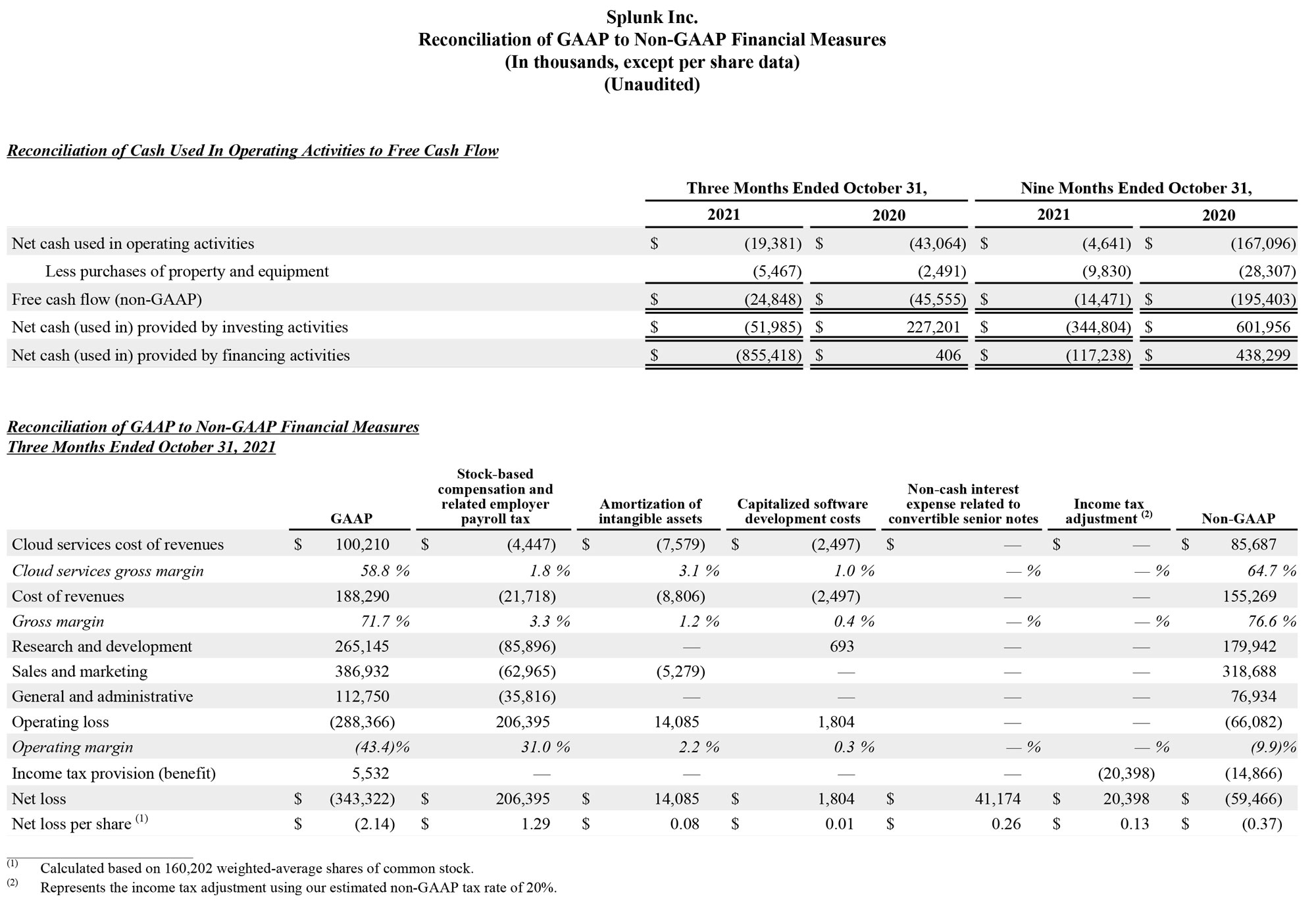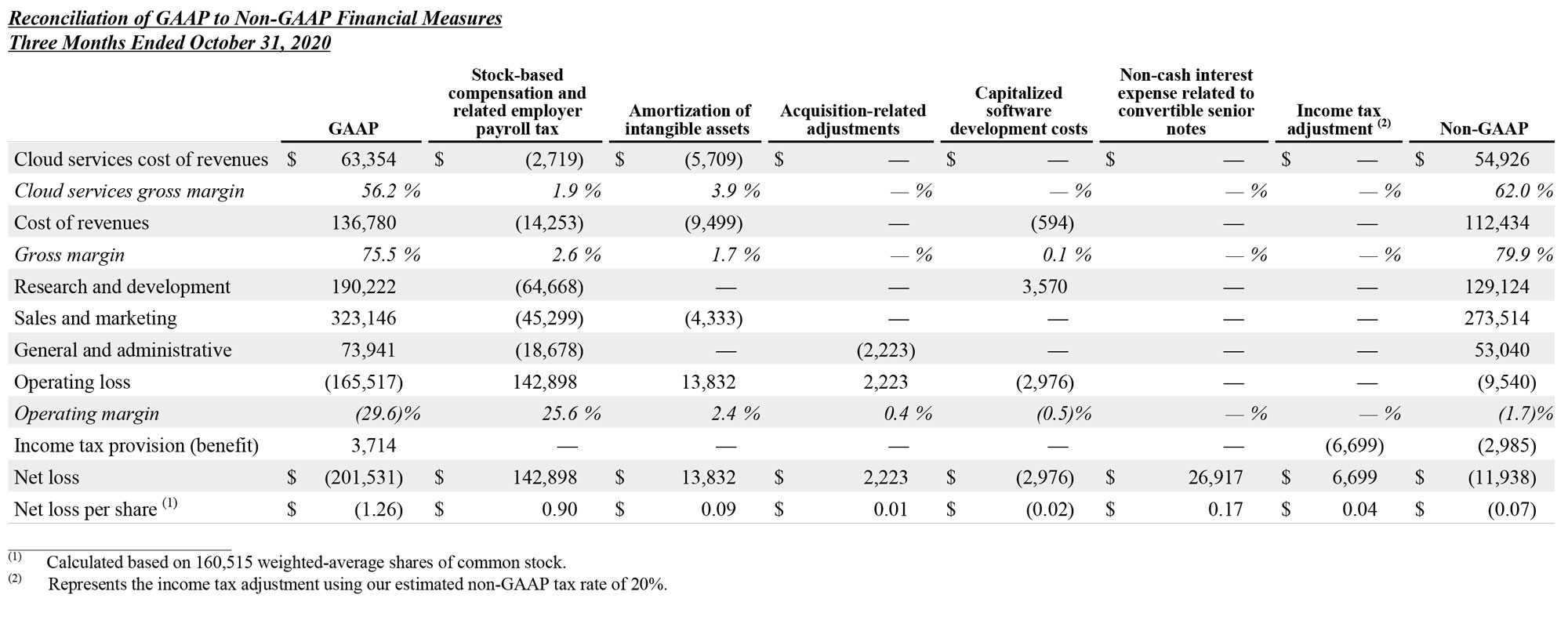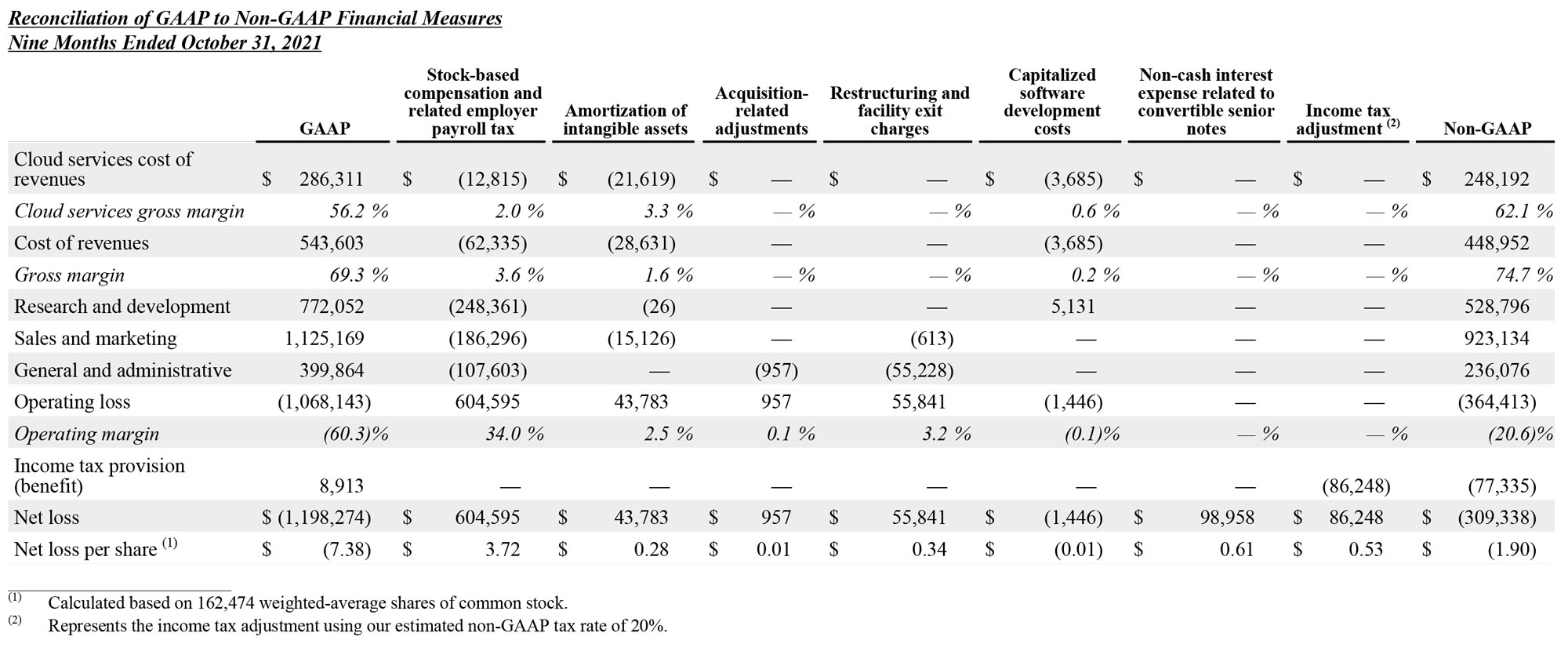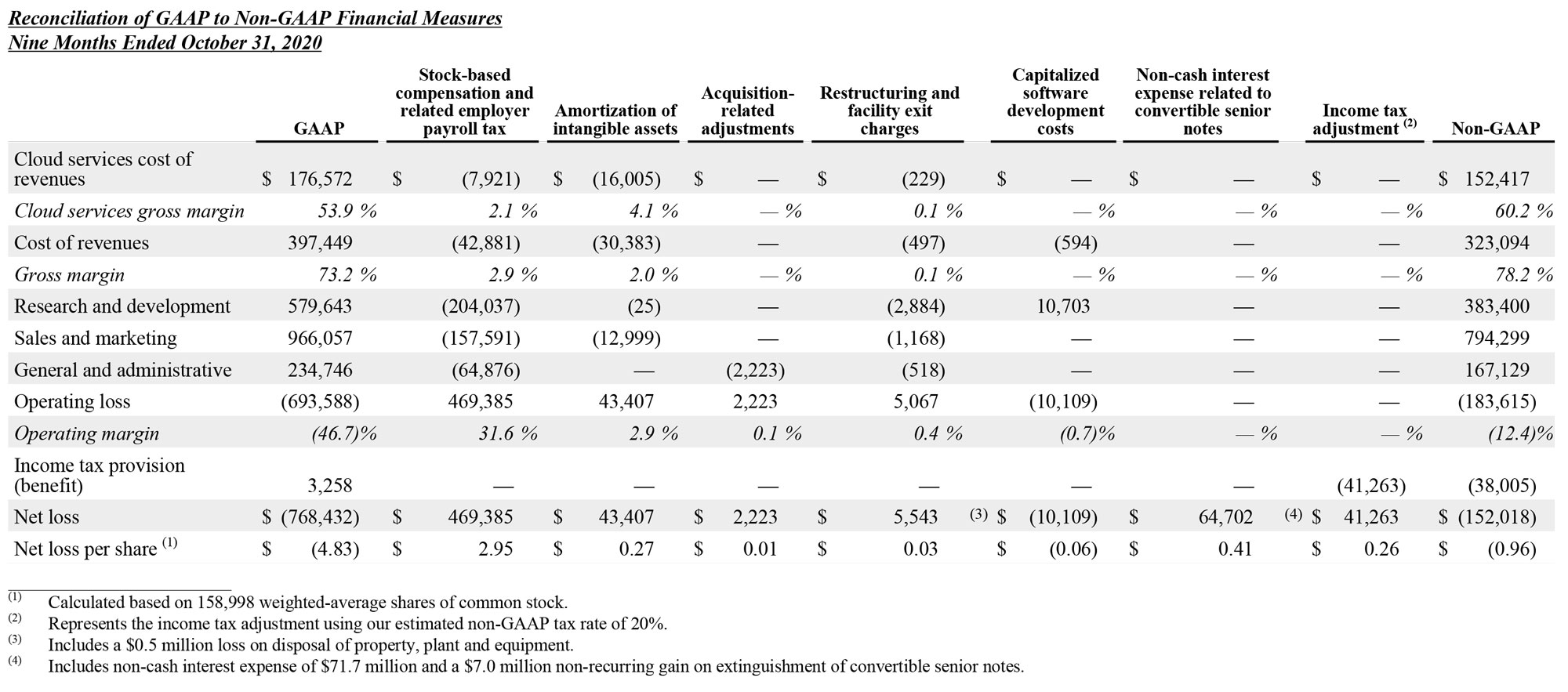SAN FRANCISCO – December 1, 2021 – Splunk Inc. (NASDAQ: SPLK), the data platform leader for security and observability, today announced results for its fiscal third quarter ended October 31, 2021.
Third Quarter 2022 Financial Highlights
- Cloud ARR was $1.11 billion, up 75% year-over-year.
- Total ARR was $2.83 billion, up 37% year-over-year.
- Cloud revenue was $243 million, up 68% year-over-year.
- Total revenues were $665 million, up 19% year-over-year.
- 270 customers with cloud ARR greater than $1 million, up 96% year-over-year.
- 635 customers with total ARR greater than $1 million, up 43% year-over-year.
“Q3 marked a significant milestone for Splunk as it was our first billion-dollar cloud ARR quarter, with cloud accounting for a record 68% of our software bookings,” said Graham Smith, interim CEO and chair of Splunk. “Our third quarter results underscore the role Splunk is playing in our customers’ digital transformations and the immense trust organizations have in our data platform and security and observability solutions.”
“Once again, our execution was very strong as we grew cloud ARR by $130 million to more than $1.1 billion dollars, up 75% over last year,” said Jason Child, CFO of Splunk. “We finished Q3 with 635 customers with total ARR greater than $1 million dollars, up 43% from a year ago.”
“The demand environment remains strong,” continued Child, “and customer engagement is excellent, especially for existing customers managing their hybrid environments. We expect our momentum to continue through the end of the year and we’re on track to end FY22 with more than $3 billion of total ARR.”
Business Highlights:
New and Expansion Customers Include: Alamo Group Inc., ATB Financial, Bambuser, Bendigo and Adelaide Bank, Blue Yonder, CAINZ Corporation, Commonwealth Bank Australia, Duck Creek Technologies, LendingClub, Veolia, University of Nebraska, and University of Virginia.
Splunk Ushers in New Era of Data-Driven Transformation at .conf21: Over 20,000 attendees joined Splunk’s annual user conference to learn how they can accelerate innovation, strengthen their security posture and bolster resilience.
- Splunk Cloud and Splunk Enterprise: Splunk unveiled the latest enhancements to Splunk Cloud Platform and Splunk Enterprise to help organizations manage and thrive throughout their cloud journeys. These enhancements include Ingest Actions, currently in preview, which allow customers to take action on data in motion to redact, filter and route data to external S3-compliant destinations.
- Splunk Drives Observability and Security Advancements: Additional enhancements spanned the Splunk observability portfolio to improve application performance, productivity and innovation and the Splunk security portfolio to help customers increase visibility and accelerate time to detection, investigation and response. Splunk also unveiled SURGe, an elite team of cybersecurity experts that provide technical guidance during high-profile, time-sensitive cyberattacks.
- Splunk Launches New Partnerverse Program: Splunk launched the Splunk Partnerverse Program to empower its network of over 2,200 partners to build on expertise, differentiate offerings and amplify customer success in the cloud.
- Splunk Expands Accenture Partnership: Additionally, Accenture and Splunk formed the Accenture Splunk Business Group to bring together Splunk’s platform with Accenture’s functional knowledge, deep industry and technical expertise to help clients maximize insights from data, with a particular focus on AI-powered IT operations, security automation and intelligent supply chain.
Splunk Receives Provisional Department of Defense Impact Level 5 (IL5) Authorization: The U.S. Defense Information Systems Agency (DISA) has granted the Splunk Cloud Platform U.S. Department of Defense (DoD) Impact Level 5 (IL5) Provisional Authorization (PA) to provide secure cloud solutions for managing mission-critical data. Splunk also recently announced the Government Logging Modernization Program to help Federal government agencies meet the requirements of cyber incident response per Executive Order and guidance included in OMB M-21-31 under the Biden Administration.
Industry Analysts Recognize Splunk a Leader in ITOA and AIOps: For the seventh year in a row, Splunk ranked No. 1 in IDC’s Worldwide IT Operations Analytics Software Market Shares, 2020,* driven by increased expansion in Splunk’s log management and analytics capabilities. Splunk was also recognized as a Market Leader in AIOps by three prominent market analyst reports: Omdia Universe: Selecting an AIOps Solution, 2021-22 report, Research In Action’s Vendor Selection Matrix™ Artificial Intelligence Predictive Analytics-Top 20 Global Vendors 2021 and Constellation’s ShortList™ for AIOps.
Financial Outlook
The company is providing the following guidance for its fiscal fourth quarter 2022 (ending January 31, 2022):
- Cloud ARR is expected to be between $1.325 billion and $1.350 billion.
- Total ARR is expected to be between $3.085 billion and $3.135 billion.
- Total revenues are expected to be between $740 million and $790 million.
- Non-GAAP operating margin is expected to be between negative 2% and negative 8%.
The company is providing the following guidance for its fiscal year 2022 (ending January 31, 2022):
- Total revenues are expected to be between $2.51 billion and $2.56 billion.
- Non-GAAP operating margin is expected to be between negative 15% and negative 17%.
- Operating cash flow is expected to be approximately $100 million.
The company is providing the following guidance for its fiscal year 2023 (ending January 31, 2023):
- Cloud ARR is expected to be at least $2 billion.
- Total ARR is expected to be approximately $3.9 billion.
Conference Call and Webcast
Splunk’s executive management team will host a conference call beginning at 1:30 p.m. PT (4:30 p.m. ET) to discuss financial results and business highlights. Interested parties may access the call by dialing (866) 501-1535 in the U.S. or (216) 672-5582 from international locations. A live audio webcast of the conference call will be available through Splunk’s Investor Relations website at http://investors.splunk.com/events-presentations. A replay of the call will be available through December 8, 2021 by dialing (855) 859-2056 and referencing Conference ID 6961319.
Safe Harbor Statement
This press release contains forward-looking statements that involve risks and uncertainties, including statements regarding Splunk’s guidance for cloud ARR, total ARR, revenue and non-GAAP operating margin targets for the company’s fiscal fourth quarter, and revenue, non-GAAP operating margin and operating cash flow for the company’s fiscal year 2022, and cloud ARR and total ARR for the company’s fiscal year 2023; statements regarding our market opportunity, including trends in the pace of customer digital and cloud transformation; our global presence and trends in customer demand and engagement; the growth of our cloud business; the market for data-related products and the importance of data and our ability to leverage these trends; our strategy, technology and product innovation; expectations for our industry, business and products, such as our business model, customer demand and trust, our partner relationships, customer success and feedback, expanding use of Splunk by customers, and expected benefits and scale of our products. There are a significant number of factors that could cause actual results to differ materially from statements made in this press release, including: risks associated with Splunk’s rapid growth, particularly outside of the United States; Splunk’s inability to realize value from its significant investments in the company’s business, including product and service innovations and through acquisitions; Splunk’s shift from sales of licenses to sales of cloud services which impacts the timing of revenue and margins; a shift from generally invoicing multi-year contracts upfront to invoicing on an annual basis, which impacts cash collections; Splunk’s transition to a multi-product software and services business; Splunk’s inability to successfully integrate acquired businesses and technologies; Splunk’s inability to service its debt obligations or other adverse effects related to the company’s convertible notes; the emergence and impact of new COVID-19 variants and related public health measures on our business, as well as the impact of new variants on the overall economic environment, including customer buying capacity, urgency and patterns; and general market, political, economic, business and competitive market conditions.
Additional information on potential factors that could affect Splunk’s financial results is included in the company’s Quarterly Report on Form 10-Q for the fiscal quarter ended July 31, 2021, which is on file with the U.S. Securities and Exchange Commission (“SEC”) and Splunk’s other filings with the SEC. Splunk does not assume any obligation to update the forward-looking statements provided to reflect events that occur or circumstances that exist after the date on which they were made.
*IDC Worldwide IT Operations Analytics Software Market Shares, 2020: Market Growth Accelerates, Doc #US48125121, Tim Grieser, August 2021.
Splunk Inc. (NASDAQ: SPLK) helps organizations around the world turn data into doing. Splunk technology is designed to investigate, monitor, analyze and act on data at any scale.
Splunk, Splunk>, Data-to-Everything and Turn Data Into Doing are trademarks and registered trademarks of Splunk Inc. in the United States and other countries. All other brand names, product names, or trademarks belong to their respective owners. © 2021 Splunk Inc. All rights reserved.


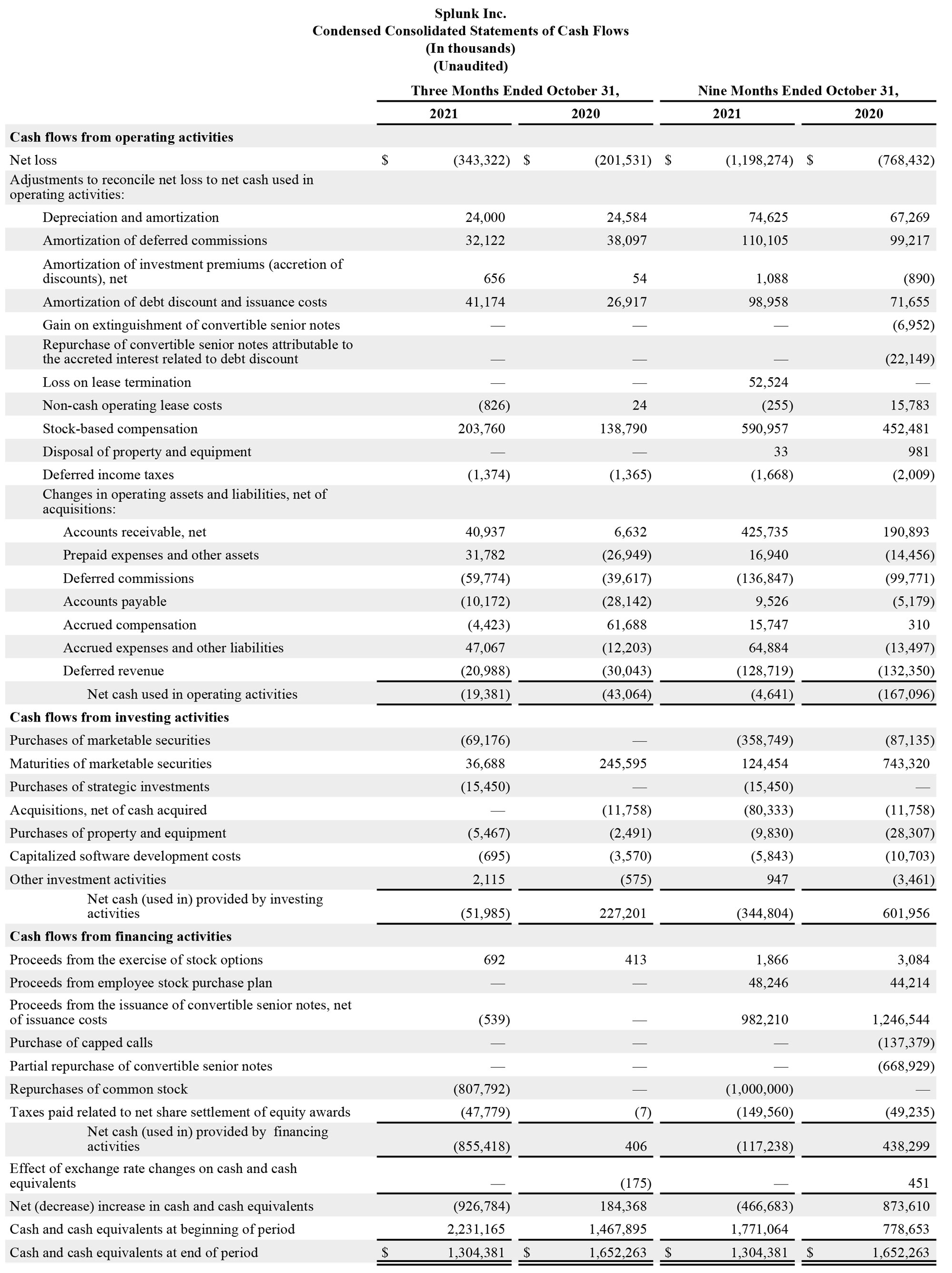
Splunk Inc.
Operating Metrics
Total Annual Recurring Revenue (“Total ARR”) represents the annualized revenue run-rate of active cloud services, term license and maintenance contracts at the end of a reporting period. Cloud Annual Recurring Revenue (“Cloud ARR”) represents the annualized revenue run-rate of active cloud services contracts at the end of a reporting period. Each contract is annualized by dividing the contract value by the number of days in the contract term and then multiplying by 365.
Non-GAAP Financial Measures and Reconciliations
To supplement Splunk’s condensed consolidated financial statements, which are prepared and presented in accordance with generally accepted accounting principles in the United States (“GAAP”), Splunk provides investors with the following non-GAAP financial measures: cloud services cost of revenues, cloud services gross margin, cost of revenues, gross margin, research and development expense, sales and marketing expense, general and administrative expense, operating income (loss), operating margin, income tax provision (benefit), net income (loss), net income (loss) per share and free cash flow (collectively the “non-GAAP financial measures”). These non-GAAP financial measures exclude all or a combination of the following (as reflected in the following reconciliation tables): expenses related to stock-based compensation and related employer payroll tax, amortization of intangible assets, acquisition-related adjustments, restructuring and facility exit charges, capitalized software development costs and non-cash interest expense related to convertible senior notes. The non-GAAP financial measures are also adjusted for Splunk's estimated tax rate on non-GAAP income (loss). To determine the estimated non-GAAP tax rate, Splunk evaluates financial projections based on its non-GAAP results and the tax effect of those projections. The estimated non-GAAP tax rate takes into account many factors including our operating structure and tax positions. The non-GAAP tax rate applied to the three and nine months ended October 31, 2021 was 20%. The applicable fiscal 2021 tax rates are noted in the reconciliations. In addition, non-GAAP financial measures include free cash flow, which represents operating cash flow less purchases of property and equipment. Splunk considers free cash flow to be a liquidity measure that provides useful information to management and investors about the amount of cash generated or used by the business.
Splunk excludes stock-based compensation expense because it is non-cash in nature and excluding this expense provides meaningful supplemental information regarding Splunk’s operational performance and allows investors the ability to make more meaningful comparisons between Splunk’s operating results and those of other companies. Splunk excludes employer payroll tax expense related to employee stock plans in order for investors to see the full effect that excluding that stock-based compensation expense had on Splunk’s operating results. These expenses are tied to the exercise or vesting of underlying equity awards and the price of Splunk’s common stock at the time of vesting or exercise, which may vary from period to period independent of the operating performance of Splunk’s business. Splunk also excludes amortization of intangible assets, acquisition-related adjustments, restructuring and facility exit charges, capitalized software development costs and non-cash interest expense related to convertible senior notes from the applicable non-GAAP financial measures because these adjustments are considered by management to be outside of Splunk’s core operating results.
There are limitations in using non-GAAP financial measures because the non-GAAP financial measures are not prepared in accordance with GAAP, may be different from non-GAAP financial measures used by Splunk’s competitors and exclude expenses that may have a material impact upon Splunk’s reported financial results. Further, stock-based compensation expense has been and will continue to be, for the foreseeable future, a significant recurring expense in Splunk’s business and an important part of the compensation provided to Splunk’s employees. The presentation of the non-GAAP financial measures is not intended to be considered in isolation or as a substitute for, or superior to, the financial information prepared and presented in accordance with GAAP. Splunk uses these non-GAAP financial measures for financial and operational decision-making purposes and as a means to evaluate period-to-period comparisons. Splunk believes that these non-GAAP financial measures provide useful information about Splunk’s operating results, enhance the overall understanding of past financial performance and future prospects and allow for greater transparency with respect to key metrics used by management in its financial and operational decision making. In addition, these non-GAAP financial measures facilitate comparisons to competitors’ operating results. The non-GAAP financial measures are meant to supplement and be viewed in conjunction with GAAP financial measures.
The following tables reconcile Splunk’s GAAP results to Splunk’s non-GAAP results included in this press release.
